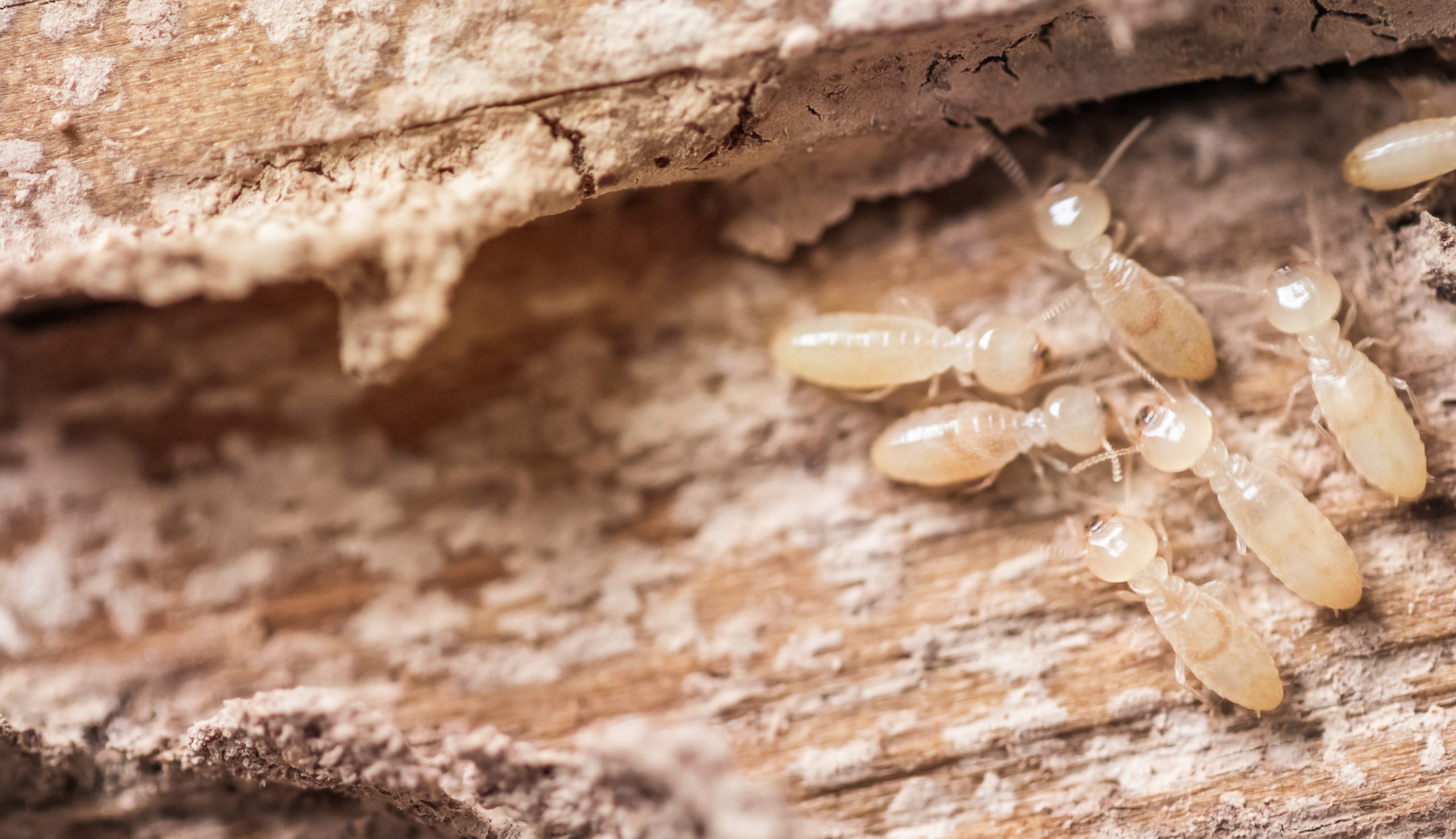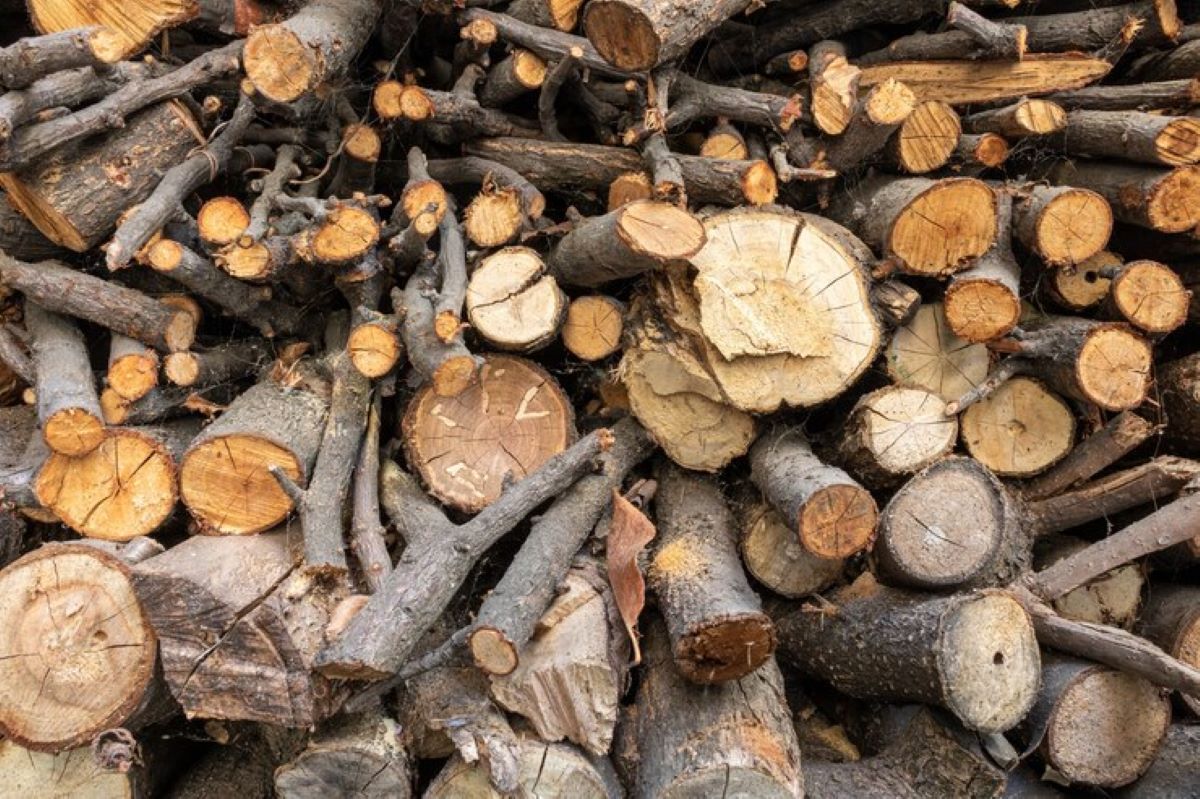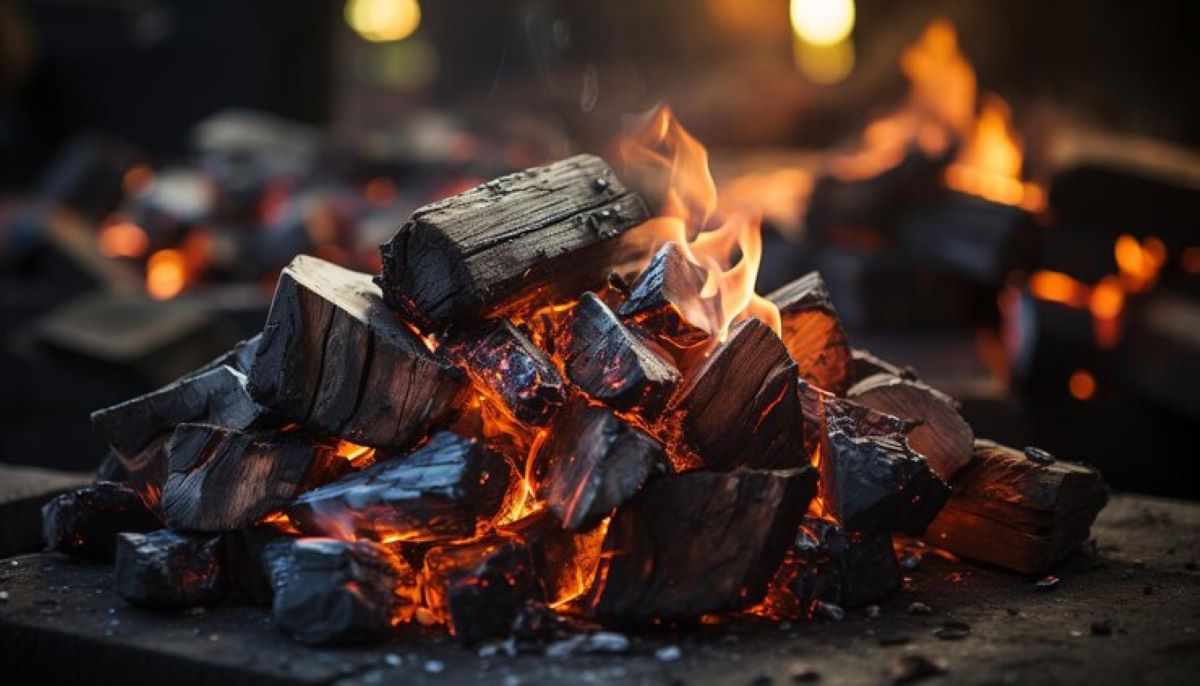Termite pest control Sydney services exist for one critical reason: these silent destroyers cause millions of dollars in property damage across the city each year. Sydney’s warm, humid climate creates ideal conditions for termite colonies to thrive, making homes particularly vulnerable to attack.
Termite infestations work invisibly, eating away at timber frames, flooring, and structural supports from the inside out. By the time visible damage appears, colonies may have already compromised a home’s structural integrity. The financial burden of repairs can reach tens of thousands of dollars, with insurance policies typically excluding sydney termite control damage from coverage.
Recognising early signs of termite infestation becomes essential for Sydney homeowners. Catching an infestation in its initial stages allows for targeted treatment before extensive termite damage Sydney properties commonly experience. This guide explores the warning signals that indicate termite activity, helping you protect your most valuable asset through timely intervention.
What Are Termites and Why Are They a Problem in Sydney?
What makes termites such a destructive force in Australian homes? Termites Sydney residents encounter are small, pale insects that feed on cellulose—a compound found in wood and plant materials. These social insects live in colonies that can contain millions of members, working silently and relentlessly to consume timber from the inside out.
Why does Sydney’s climate create ideal conditions for termite activity?
The region’s warm temperatures and high humidity levels provide the perfect environment for termite species Australia is home to, particularly subterranean termites. These conditions allow colonies to thrive year-round, with moisture enabling them to maintain their delicate bodies whilst they tunnel through structures.
The humid coastal climate means termites remain active during most seasons, unlike colder regions where their activity slows. Sydney’s average humidity levels of 60-70% combined with temperatures rarely dropping below 10°C create a perpetual breeding ground for these pests.
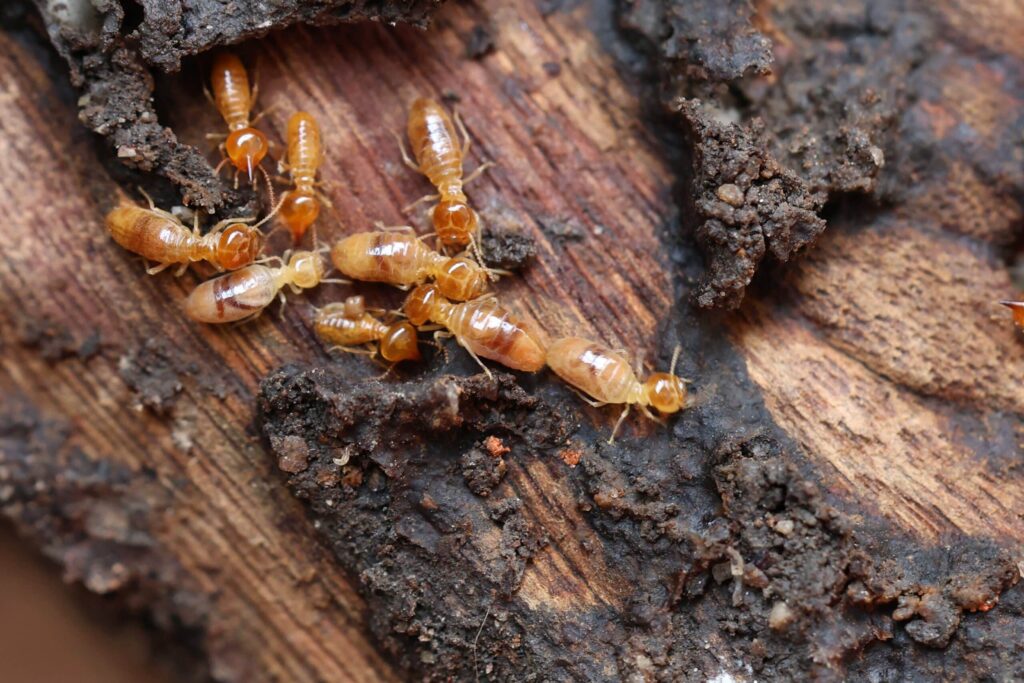
What do termites actually consume in your home?
Their diet includes:
- Structural timber in walls, floors, and roof frames
- Wooden furniture and cabinetry
- Paper products including books and documents
- Cardboard boxes and packaging materials
- Skirting boards and door frames
How severe is the threat to your property’s structural integrity?
Termite damage can compromise load-bearing beams, floor joists, and wall studs—the very skeleton of your home. A single colony can consume approximately 13 pounds of wood per week, meaning significant structural weakening can occur within months. The hidden nature of their feeding patterns makes them particularly dangerous, as damage often progresses undetected until visible signs appear or structural failure occurs.
How Do Termites Enter Homes in Sydney?
Termite entry points exist in virtually every Sydney home, as these persistent insects exploit even the smallest vulnerabilities in a building’s structure. Termites primarily access properties through cracks in concrete slabs, which develop naturally as foundations settle or due to ground movement in Sydney’s clay-rich soils.
Home termite invasion commonly occurs through:
- Foundation cracks and expansion joints where concrete meets brickwork
- Gaps around plumbing pipes entering through floors and walls
- Electrical conduit entry points that create pathways from soil to timber
- Weep holes in brick veneer construction
- Poorly sealed penetrations for air conditioning units and drainage systems
Termites don’t need large openings—a gap as narrow as 1.5mm provides sufficient access. They construct mud tubes from ground level to reach timber frames, often building these protective corridors along foundation walls where they remain hidden from view. Subterranean termites, the most destructive species in Sydney, maintain contact with soil moisture while foraging inside homes, making ground-level entry points their preferred invasion route.
What Are the Early Visual Signs of Termite Infestation?
Early termite signs appear as distinctive physical markers that homeowners can spot during routine property inspections. Recognising these visual indicators allows for swift action before extensive damage occurs.
Mud Tubes on Walls and Foundations
Mud tubes termites construct appear as pencil-width tunnels running along walls, foundations, and other surfaces. These earthen corridors serve as protected highways between termite colonies in the soil and their food sources within your home. The tubes typically measure 6-12mm wide and have a brown, muddy appearance.
You’ll most commonly find these structures:
- Along exterior foundation walls near ground level
- In basement corners and crawl spaces
- On brick or concrete surfaces leading to timber frames
- Around plumbing pipes and utility entry points
Termite Droppings Near Infested Areas
Termite droppings frass accumulate as small piles of pellets resembling sawdust or coffee grounds. Drywood termites push these waste materials out of their galleries through tiny kick-out holes, creating telltale mounds below infested timber.
The droppings display distinct characteristics:
- Six-sided pellet shape when examined closely
- Colour varies from light tan to dark brown depending on the wood consumed
- Powder-like consistency that doesn’t stick together
- Fresh accumulations indicate active infestation
Discovering either mud tubes or frass deposits warrants immediate professional assessment to determine infestation severity.
How Can Homeowners Detect Damage Caused by Termites?
Hollow sounding timber reveals internal destruction before visible damage appears. Gently tapping wooden beams, skirting boards, door frames, and floorboards with a screwdriver handle produces a distinctive empty echo when wood damage termites have consumed the interior. Solid, undamaged timber creates a firm, dense sound.
Testing timber regularly in vulnerable areas helps catch infestations early:
- Structural beams in basements and roof spaces
- Window and door frames where moisture accumulates
- Skirting boards along external walls
- Wooden flooring near bathrooms and kitchens
Surface changes often signal hidden termite colonies working beneath. Paint and plaster appear normal from a distance but show subtle distortions upon closer inspection. Bubbling paint occurs when termites create thin layers between the wood surface and paint film, trapping moisture and gases. The paint lifts away from the timber in small blisters or larger sections.
Peeling plaster similarly indicates termite activity behind walls. The surface cracks, flakes, or separates as termites hollow out the supporting timber framework. These cosmetic changes typically appear in patches rather than uniform deterioration, distinguishing termite damage from general wear or water damage.
Pressing gently on suspicious areas may cause the surface to give way, revealing galleries and tunnels carved through the timber beneath.
What Are Other Sensory Indicators That Suggest Termite Activity?
Can you hear unusual sounds coming from your walls? Clicking sounds termites make whilst feeding or communicating can be detected in quiet environments. Soldier termites bang their heads against tunnel walls when threatened, creating faint tapping or clicking noises inside walls that signal active colonies.
Have you noticed winged insects near windows or light sources? The presence of dead flying termites swarmers Sydney residents find indoors indicates a mature nest nearby. These reproductive termites emerge during warmer months to establish new colonies.
Key sensory warning signs include:
- Soft clicking or tapping sounds emanating from wall cavities, particularly at night
- Discarded wings scattered on windowsills, floors, or near entry points
- Dead flying termites accumulating around light fixtures or doors
- Wings that appear translucent and equal in length
Swarmer activity typically occurs after rainfall when humidity levels rise. Finding even a small number of wings suggests an established colony has reached maturity and is expanding its territory.
When Should Homeowners Contact Professional Termite Pest Control Services?
Should you call a professional immediately after spotting termite signs? Yes—contact licensed pest control Sydney experts as soon as you notice any indicators of termite activity. Immediate action prevents further structural damage and allows for proper assessment.
Why shouldn’t you disturb suspected termite activity? Touching or disrupting mud tubes, droppings, or damaged timber can alert termites to your presence, causing them to relocate deeper into your property’s structure. This makes detection and treatment significantly more challenging for pest controllers.
A professional termite inspection Sydney provides:
- Comprehensive property assessment using specialised detection equipment
- Accurate identification of termite species and colony location
- Detailed reports on infestation extent and structural damage
- Customised treatment plans tailored to your property’s specific needs
- Follow-up monitoring to ensure complete eradication
Licensed pest controllers possess the training, tools, and treatments necessary to address infestations safely and effectively. They can distinguish between active and dormant colonies, preventing unnecessary treatments whilst ensuring genuine threats receive immediate attention.
It’s also important to understand the nature of these pests. For instance, did you know that termites can bite? This fact underscores the urgency of addressing a termite infestation promptly.
Moreover, if you’re living in an older property or a historic building, you might want to consider some preventive measures based on insights from studies like this one on subterranean termite prevention in Colonial Williamsburg.
For more information about various pest control strategies including those specifically designed for termite infestations, visit our pest control category where you’ll find a wealth of resources.
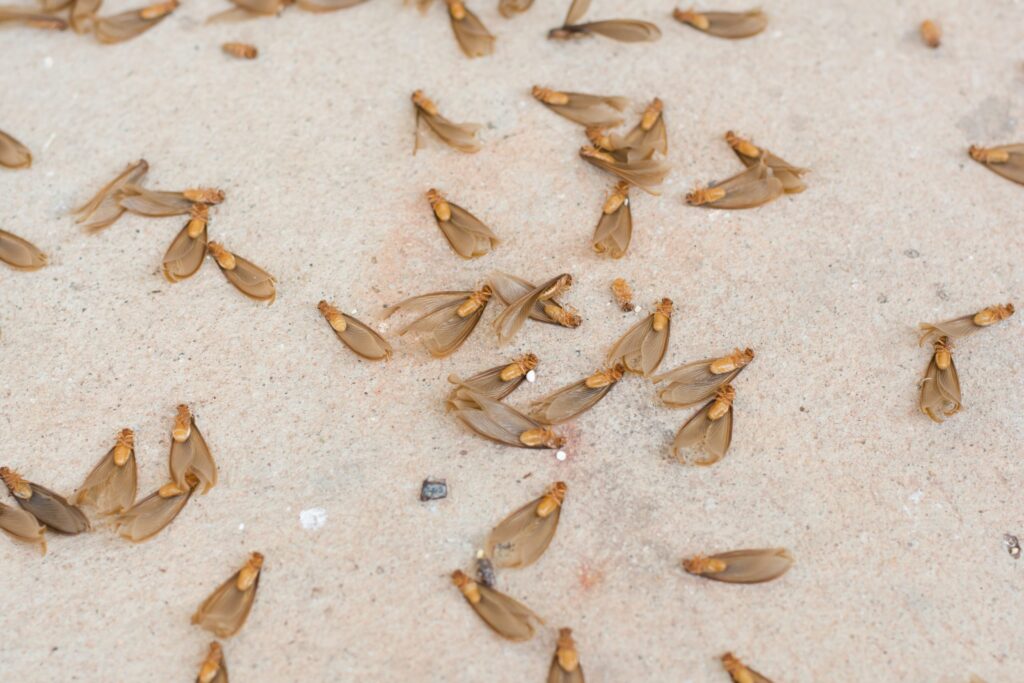
What Preventative Measures Can Be Taken Against Termite Infestations?
Can termite infestations be prevented before they start? Termite prevention Sydney strategies include both preconstruction and post-construction approaches that create protective barriers around properties. Preconstruction techniques involve installing chemical barriers termites cannot penetrate during the building phase, typically applied to the soil beneath concrete slabs and around the foundation perimeter.
Post construction termite management offers solutions for existing homes through several methods:
- Chemical reticulation systems: Underground pipes installed around the property perimeter allow periodic chemical treatments without excavation
- Physical barriers: Stainless steel mesh or graded stone particles installed during renovations block termite entry points
- Monitoring stations: Strategically placed devices detect termite activity early, allowing targeted treatment before significant damage occurs
- Regular inspections: Annual professional assessments identify vulnerable areas and early warning signs
Maintaining proper drainage, removing timber debris from around the property, and ensuring adequate ventilation in subfloor areas reduces moisture levels that attract termite colonies.
Conclusion
Why is prompt action essential when termites are suspected? Early detection termites Sydney requires immediate professional intervention to prevent extensive structural damage and costly repairs. Homeowners who notice mud tubes, hollow-sounding timber, or discarded wings should contact licensed pest control specialists without delay.
What makes professional help crucial? Effective termite control strategies rely on expert assessment and targeted treatment methods that DIY approaches cannot match. Licensed technicians possess the tools and knowledge to identify infestation extent, eliminate colonies, and implement long-term protection systems.
Protecting your Sydney property from termite damage begins with vigilance and ends with professional expertise—don’t wait until structural integrity is compromised.
Related : Rodent Control Sydney: What’s the Fastest Way to Get Rid of Rats?
